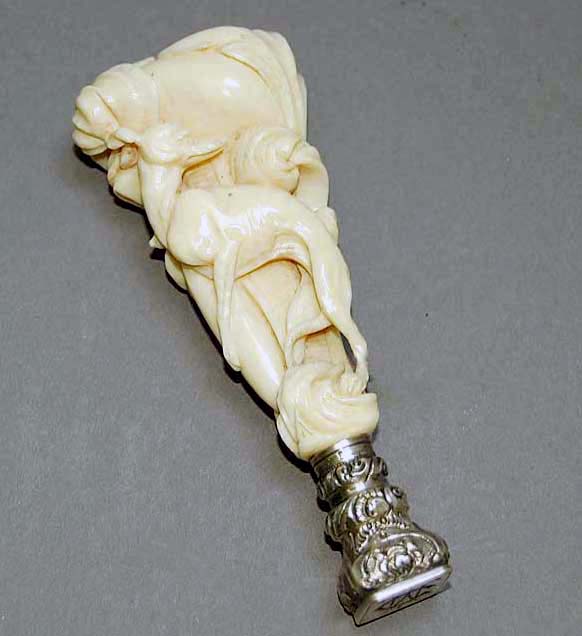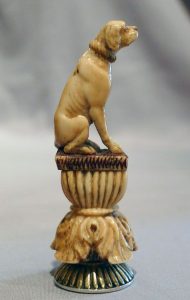
Wax seals go back so far in history, we’d be hard pressed to put a date on their use. Seals have been found from the Indus Valley

Antique ivory and silver seal modeled as a seated hound sitting on an Acanthus flower base with reeded sides and reeded top to seal. Probably English and probably late 18th or early 19th century. Found on Pinterest
and Mesopotamia civilizations, and those first seals were made with clay impressed with engraved cylinders or rings. Using wax for seals didn’t begin until the Middle Ages, and they were the exclusive purview of royalty, the clergy, bishops, and royal courts for issuing decrees and authenticating documents. Eventually, the practice drizzled down to the “everyman,” and even butchers signed contracts with a seal bearing the image of a pig or cow. By the 13th century, even the illiterate used seals in place of a signature to authenticate important papers. Most of the time, melted wax was pressed with a handheld seal, but often documents or envelopes were sealed with a signet ring bearing the family crest. Because seals were used to authenticate a person’s directives, they were typically destroyed after the owner died to prevent forgeries after death.
As humans, we often make utilitarian objects decorative and beautiful, and such was the case with seals. Handles made of ivory often depicted dogs, and while the breeds may have looked a bit different “back in the day,” the sighthounds are no less lovely today. If you ever see one of these at an estate sale or antique shop, buy it! They are supremely collectable.
Breed specific wax seals are available today, though they are most likely made of plastic or brass. Still, they get the job done and are a lovely touch on pedigrees. Find a few here.
Image of 19th century hand carved ivory and silver writers wax seal (or sceau) featuring a Whippet
